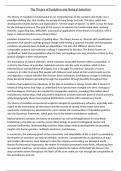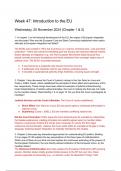Summary
Summary The Theory of Evolution and Natural Selection
- Institution
- AQA
One of the fundamental ideas in biology that explains the diversity of life on Earth is the Theory of Evolution, which was mainly established by Charles Darwin. Natural Selection, the process by which species change over time based on the differential survival and reproduction of individuals with b...
[Show more]





